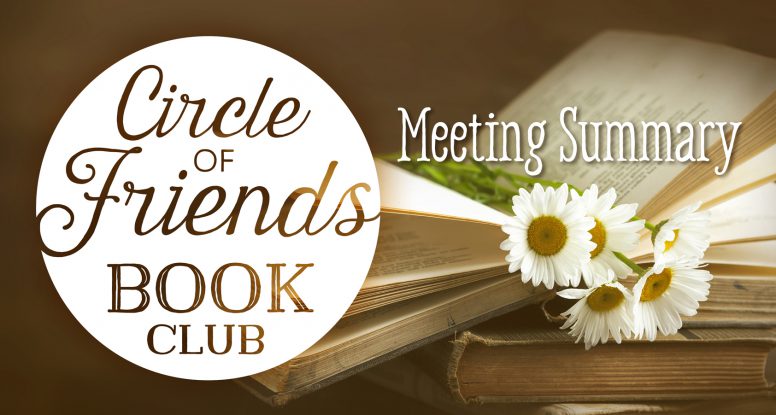
Circle of Friends Book Club meeting summary for October 2019
October 9, 2019
October’s bookclub meeting included discussions of several books presented by individual members. Two members brought the same book: Just Mercy by Bryan Stevenson, founder of the Equal Justice Initiative. This book looks at the criminal justice system by following the story of an African-American man on death row, with a focus on injustice in sentencing and imprisonment, especially regarding the death penalty. Readers found it readable and very informative, but challenging due to the upsetting nature of its subject.
The second presentation was the August 18, 2019 issue of the New York Times Magazine, which focuses exclusively on the 1619 Project. The goal of this project is to re-examine the legacy of slavery in our country, timed to coincide with the 400th anniversary of the arrival in America of the first slaves. Its stated goals include telling the story of America truthfully, and learning accurate history as foundational to America’s identity. It also examines and catalogs contributions coming from the portion of Americans who were brought here involuntarily and their descendants.
The next book presented was Seeing the Light of World Faith by Alan Bryson. This book presents passages from world faiths and discusses the founders of world religions, including the Baha’i Faith. Emphasis is placed on the similarities between faiths, and the progress made by humanity with the advent of each. This book difficult to find if one should be interested to read it.
A Tale for the Time Being by Ruth Ozeki was the next book discussed. The member presenting this title explained that the title itself is a play on words, with “time being” also meaning a being in time. The book follows two female characters, one a teenager in Japan and one a researcher in Canada, and presents “an education in Japanese culture” both positive and negative. The book brings into its plot a wide variety of characters and topics, some humorous and some serious, and goes in many directions, but is engaging and interesting.
The next book presented was Women Pray, edited by Monica Furlong. This book is subtitled: Voices through the Ages, from Many Faiths, Cultures, and Traditions, and other than the introduction, consists of prayers and writings from a variety of female voices. The prayers are grouped by topic, including Blessings, Mothers and Forebears, Birth and Death, and Earth Our Mother. The introduction gives context as well as pointing out similarities and the wide variety when women pray.
The last book discussed was The Satapur Moonstone by Sujata Massey. This novel is the second in a series (following The Widows of Malabar Hill) following a young female lawyer in 1920s India who is a Parsee, or Zoroastrian. Forbidden to practice law in a courtroom due to her sex, Perveen Mistry begins a career in a niche that makes her sex an asset: serving women in purdah, who cannot communicate with males outside of their family except through a screen. Perveen is an admirable character who is able to enter into these women’s lives directly, and each book has a mystery at its core, as well as giving a glimpse into an exotic environment and the traditions of Perveen’s Zoroastrian faith.
